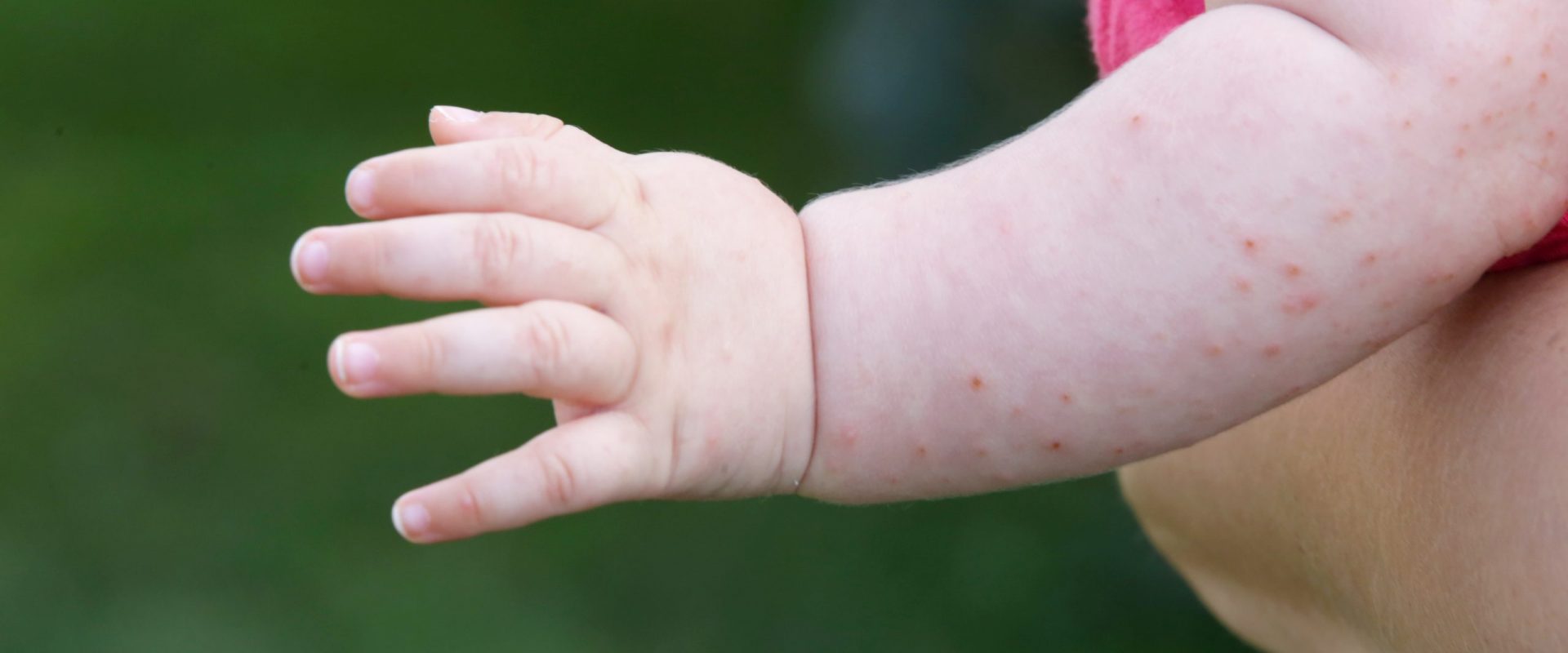
Measles Updates
Measles is a highly contagious disease caused by measles virus. Patients with measles present with fever and with a rash. The rash looks like small, red, flat spots that start on the face/head and then spread downwards over the body. The rash does not form blisters, nor is it itchy or painful. Other signs include cough, conjunctivitis (red eyes) and coryza (running nose). Complications of measles can include diarrhea, dehydration, middle ear infection, brain infection (encephalitis), blindness and death. Complications are more serious in those who catch measles as young infants (under 2 years of age), in children who are malnourished and people who are immunosuppressed.
Any person who is not immune to measles can catch measles from an infected person. Once a person has had measles, they are immune to
the virus. Vaccination is another way to become immune to measles. Vaccinated individuals are protected from severe symptoms of measles,
mostly for the rest of their life. Communities become vulnerable to outbreaks of measles when more than 5% of persons are not vaccinated.
Measles is spread by contact with saliva or mucus droplets from the mouth or nose of an infected person when they breathe, cough, or
sneeze. These droplets can remain airborne for up to two hours in enclosed areasand can infect susceptible individuals. Measles is one of the most infectious viruses known to humankind.
The first sign of measles is usually a high fever with a rash, cough, running nose, and conjunctivitis . The rash starts at the head and spreads to the rest of the body. Koplik spots (white spots) in the mouth can also be an indication of measles but these are relatively hard to identify, especially when health care workers have not seen many cases of measles. People with a weak immune system due to HIV, cancer or other diseases often do not develop a rash. Measles can lead to complications like pneumonia (infection of the lungs), blindness, diarrhoea, dehydration, brain infection (encephalitis) or death.
Recent Updates
FAQ
Most frequent questions and answers about Measles
Measles infections are not localised to particular risk groups or geographical areas – and occur anywhere in South Africa. Cases can be found in communities or in institutions like crèches or day care centres.
Adult travellers who have not been vaccinated in childhood are also at risk of measles when visiting areas where measles cases have been reported, or where measles is relatively common. When many measles cases occur in a specified area over a short period of time (three or more cases in a health district within four weeks), this is called an outbreak and public health interventions are required to control the spread of the disease. A large outbreak of measles occurred in South Africa in 2009 with over 18,000 confirmed cases.
Measles should be considered in any person presenting with a fever and rash. The measles rash is very similar to that of certain other viral infections (like German measles) so the diagnosis should always be confirmed by a blood test. A throat swab, collected within 5 days of the start of the rash, can also be sent to the laboratory together with the blood sample. Measles is a notifiable disease and public health officials will respond to every measles case to prevent outbreaks. Blood should be taken from the patient and sent to the NICD Centre for Vaccines and Immunology.
There is no specific treatment for measles, so treatment is directed at improving symptoms and preventing complications. Vitamin A should be given to all children with measles to prevent eye damage.
Measles can be prevented by vaccination. Measles vaccine is included in the expanded program on immunizations (EPI) schedule in South Africa.
Measles vaccine is administered at 6 months and 12 months of age. Measles vaccine is also available as a combination called measles, mumps, and rubella (MMR) vaccine in the private sector and in military health care facilities. MMR is usually administered at 12 months and 18 months. If a measles vaccine dose has been missed, it is never too late to catch up measles vaccination.
Influenza vaccination is the best way to prevent influenza infection. The influenza virus is constantly changing and vaccination for influenza has to be administered every year. The vaccine is an inactivated virus that is not harmful and cannot cause flu infection. It only offers protection about 2 weeks after administration. So ideally the flu vaccine should be taken early (March/April each year) before the flu season so that it has sufficient time to protect a person. However, it is never too late to vaccinate as long as the flu virus is circulating in the community.
While influenza and COVID-19 are both contagious respiratory illnesses caused by viruses, the viruses that cause them are not the same. COVID-19 is caused by infection with a new coronavirus (called SARS-CoV-2), and flu is caused by infection with influenza viruses.
Both viruses can cause mild to severe illness and present with similar symptoms including fever, cough, sore throat, shortness of
breath, runny or blocked nose, muscle pains/body aches and fatigue. COVID-19, on the other hand, seems to spread more easily than flu and can result in a more serious illness in certain people. Other signs and symptoms of COVID-19, different from flu, may include a change in or loss of taste or smell.
COVID-19 infected people can also take longer to show symptoms, and they can be contagious for longer periods. Since some flu and COVID-19 symptoms are similar, it may be difficult to differentiate between them based on symptoms alone, and laboratory testing may be needed to confirm a diagnosis.




